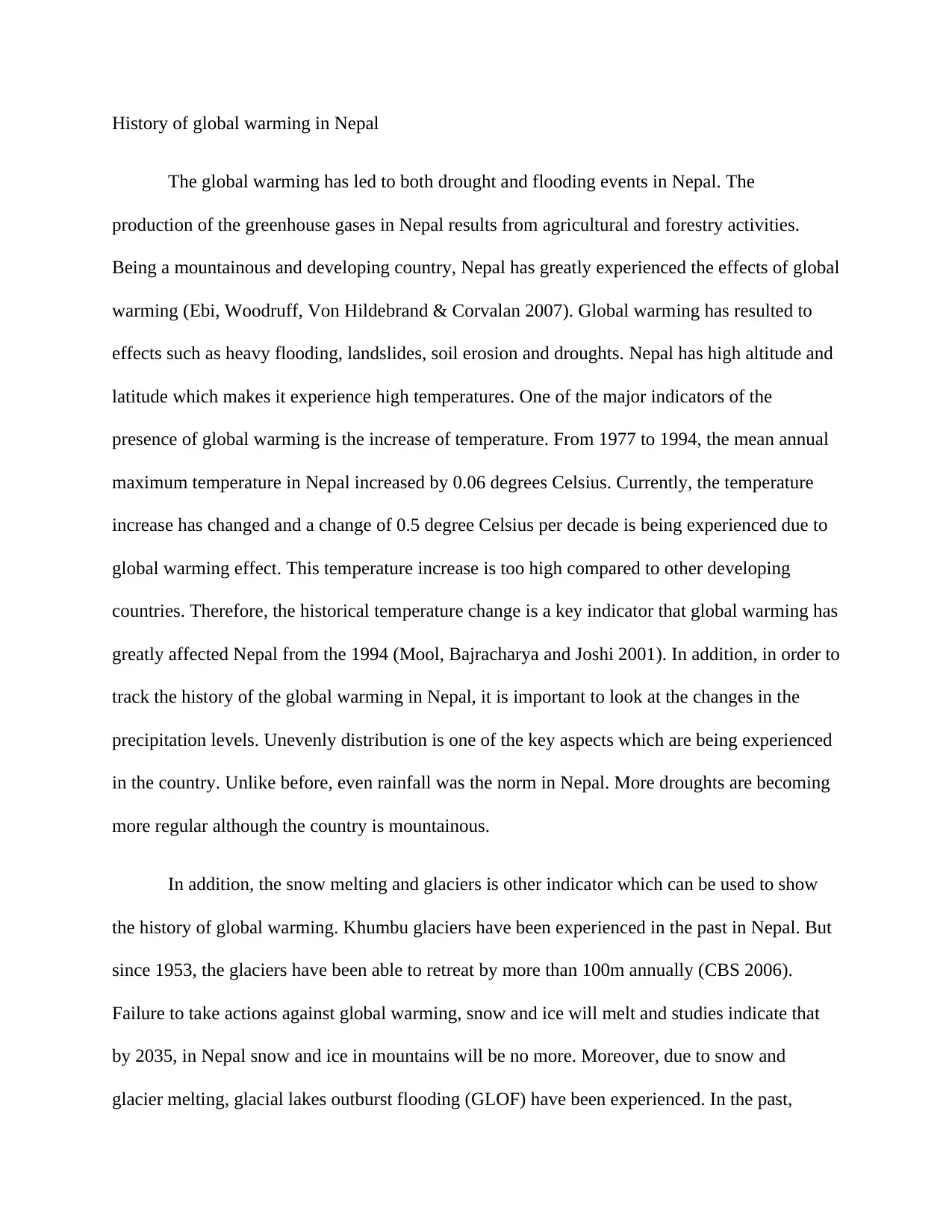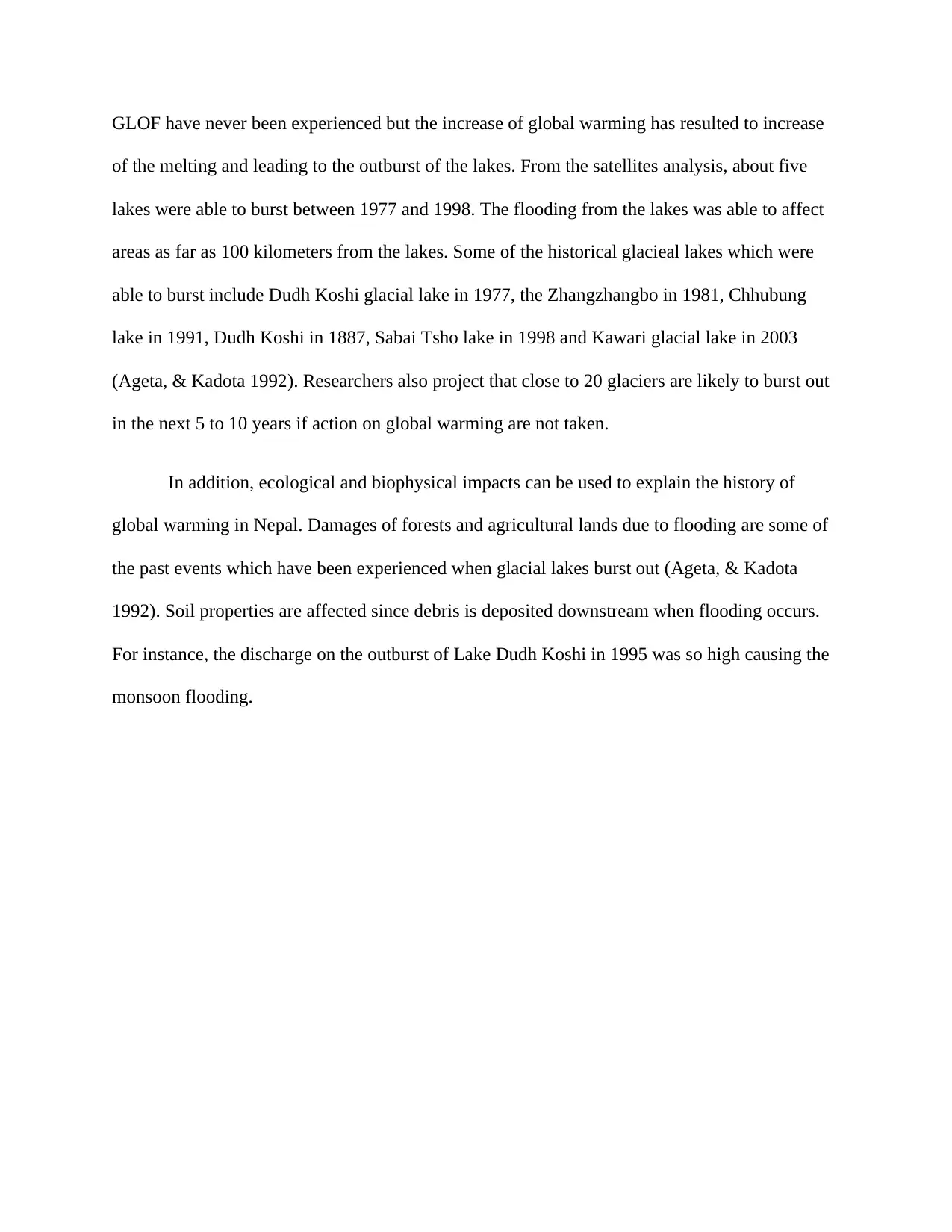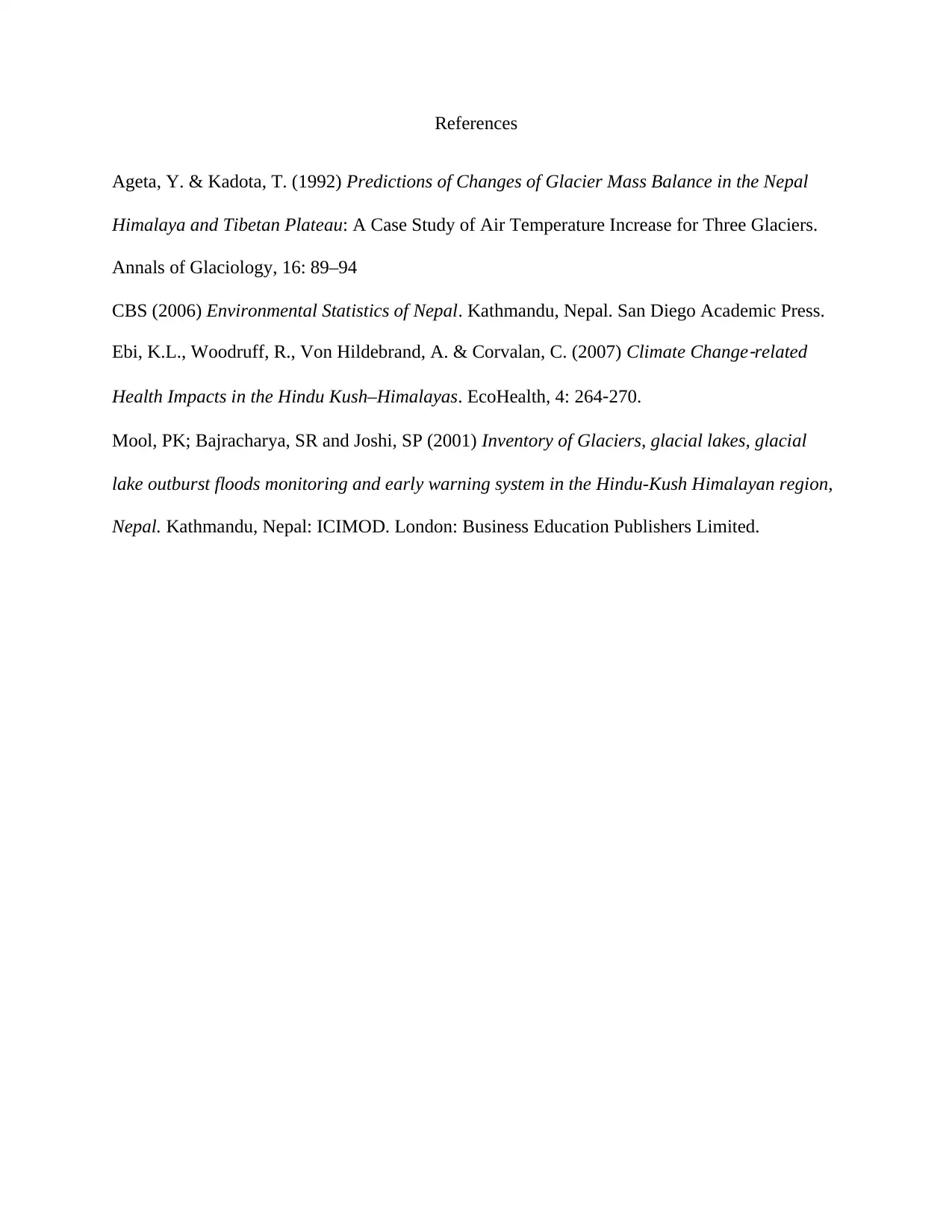Nepal's Global Warming: Historical Impacts and Future Projections
VerifiedAdded on 2020/05/16
|4
|763
|34
Report
AI Summary
This report provides a historical analysis of global warming's effects in Nepal. It examines key indicators such as temperature increases, precipitation changes, and the melting of glaciers. The study highlights the significant rise in mean annual maximum temperatures, particularly from 1977 to 1994, and the accelerated rate of temperature change in recent decades. The report also discusses the uneven distribution of precipitation and the retreat of glaciers, including the alarming predictions about the complete melting of snow and ice in the mountains by 2035. Furthermore, the report details the historical occurrences of glacial lake outburst floods (GLOFs), their impact on the environment, and the projection of future GLOF events. It also touches on the ecological and biophysical consequences of these events, such as damage to forests, agricultural lands, and changes in soil properties. The report references several studies and data sources to support its findings, providing a comprehensive overview of the historical impact of global warming on Nepal's environment.
1 out of 4







![[object Object]](/_next/static/media/star-bottom.7253800d.svg)